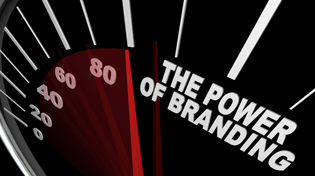Before you can begin to advertise or promote yourself, you will need to create a business image.
If you do not have a business image it will be difficult to know how to market yourself. It will also be difficult for potential customers to gauge the nature of your business.
First impressions count and can sway a customer, one way or another, about whether to use your business or not.
How customers perceive you will be critical to your bottom line. This is why it is important to build a business image. It will also be your business image which will be the basis of your marketing campaign.
It means creating a consistent identity that the outside world immediately associates with your business when they hear its name.
Image should be based on the business’ “personality”. To do this you will need to ask yourself a few key questions:
Who is likely to buy/use your products?
What benefits do your products have that gives your business a competitive advantage?
How are your competitors’ promotional materials designed?
What type of packaging are your competitors using?
While you can’t use the exact same materials as your competitors, it may give you an idea for your own promotional materials and packages, such as the use of a prominent or unusual logo.
Once you know who your target market is, you will be ready to develop the right image.
How do you develop a business image?
An image can develop slowly over time, but it is up to you to build it with foresight and care. There are many ways you can lay the foundations to develop your own special image.
You will first want to decide what you will build your business image around. For instance you may want to build it around your products. Your approach may be leaning towards the lower end of the market, hinging your business image on your ability to provide very cheap products or second-to-none service.
You may decide to build your business image based on quality products, your level of customer service or whether your products are unique and hard to find.
Your business image approach may also be manipulated to suit your customer base. Ask yourself the following:
Do you want to be portrayed as a corporate-style business?
Does your product/service lend itself towards a more laid-back approach?
Should you adopt a quirky slant or is your business better suited to a straight-down-the-line sales approach?
Will you have a sales mascot? Will this mascot be used to develop your business image?
Do you want your company perceived as conservative? Brash, with a tremendous amount of creative energy? Luxurious and quality-oriented or on the cutting-edge of the industry?
Developing a business logo
A business logo is a visual representation of the business image you want to convey.
For example, the big blue letters of IBM form a monolithic symbol that people have come to associate with quality business equipment and computers. The bucking horse of Ferrari embodies the speed and strength of Ferrari sports cars. And who wouldn’t recognise the golden arches of McDonalds?
In order to build an effective business image, you should take advantage of this symbolic language.
When developing a logo, begin by following the simple rules of visual communication. Keep these watchwords in mind:
Originality: Your logo should be original, not imitative.
Distinction: Your logo should be memorable.
Marketability: The logo should be readily adaptable for use in advertising, public relations and sales promotions.
Once you know what type of impression you want to create in the market, you need to convey that in a design. The simpler the design, the longer customers will remember it.
You will probably need to use a professional graphic design artist to design your logo, especially as it will have many uses, such as your sign and advertising. Make sure the designer creates more than one style or type of logo so you have a choice of what will suit you best. Many designers will include the cost of making three or four different logos in the quoted price.
Your business sign
The sign outside your business is the most important contact between you and customers. Usually it is the first thing a customer sees and should also be used to portray your business image.
If you are a retail business you will rely on walk-by trade and unless your business sign is noticeable potential customers may walk straight past.
The design and shape of your sign will depend on what you sell and your business image. Your sign should be visible from all directions.











